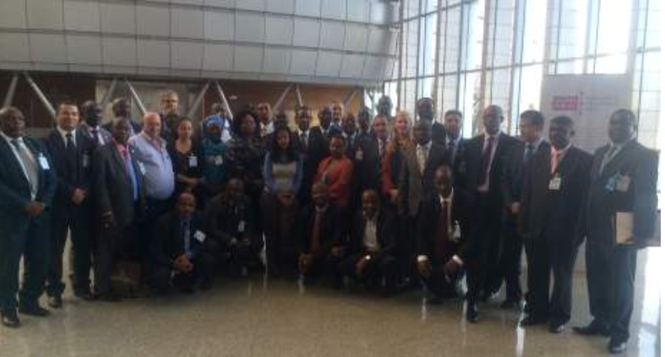
The date is 8 November 2013. A powerful typhoon bears down on the Philippines, leaving thousands dead and many more homeless. Well intentioned aid pours in from around the world, including ball gowns. “We received four boxes of ball gowns, as part of our response to typhoon Haiyan,” says Jeanine Cooper, the UNOCHA representative to the African Union.
“During a drought in Zambia, we received donations of second hand underwear,” recalls Samson Mujuda of the Embassy of the Republic of Zambia in Ethiopia. “This topic [of inappropriate aid] is very real and needs to be discussed.”
Regardless of how well intentioned the aid is, it needs to be appropriate to the situation while maintaining the dignity of those receiving it.
Recently, diplomats and disaster management experts from 35 African nations joined legal experts and humanitarian actors, including the International Federation of Red Cross and Red Crescent Societies (IFRC) in a Disaster Response Dialogue at the African Union (AU) in Addis Ababa, Ethiopia. Discussions focused on the institutional and legal frameworks for launching an international response to a disaster, including the kind of aid that is requested and accepted.
“What systems are being put in place in disaster law to ensure relief is sourced locally as much as possible?” queried Cooper. “We need to ensure that international aid does not do harm to the local systems.”
“You are speaking to the converted, in terms of resourcing items nationally,” replied Bhupinder Tomar, IFRC’s head of operations for Africa. “What we do is largely national. Our focus has always been to strengthen the capacity of communities and national institutions, not just the Red Cross and Red Crescent, but governments as well.”
Dr Julius Facki Oketta, Director of Uganda’s National Emergency Coordination and Operations Centre offered his country’s disaster management system as a good example to demonstrate the value of a proactive governmental role in the process. Dr Oketta emphasized the fact that Uganda’s 120 members of parliament form an integral part of the disaster management forum. The group can easily mobilize the government and public to respond to a disaster situation and make effective use of resources for efficient operations. Moreover, when a major disaster strikes and the country needs international assistance, Dr Oketta explains, “if you start making procedures, bureaucracy, within that time you will have lost more lives. […] If you have border issues, taxes and the rest, it will not help, so we have identified particular logistics, food and non-food items which do not need any clearance at all.”
Participants of the Dialogue also shared the view that a gap exists between national governments and their local humanitarian actors, which often do not receive enough support from government institutions. Similar gaps also exist in the coordination of international response. “The African Union is cognizant of the need to harmonize multiple layers of policies and initiatives with regards to disaster management present at the national, regional, and AU level,” said Olabisi Dare, Head of Division for Humanitarian Affairs, Refugees and Displaced people at the African Union Commission. “We have developed an African Union Humanitarian Policy Framework, and an attendant Disaster Management Policy. Both documents provide the basis for enhanced coordination, […] and include disaster risk identification and assessment, and disaster preparedness and response, with the development of associated tools, procedures, and mechanisms including standard operating procedures.”
A number of recommendations came out of the one day discussion, including encouraging member states to develop regulatory frameworks in the absence of a national disaster law; improving national coordinating structures for national disaster management that address how to coordinate international assistance; articulating local and regional capacities in national legal frameworks for disaster management; and mapping existing capacities for humanitarian response across Africa.